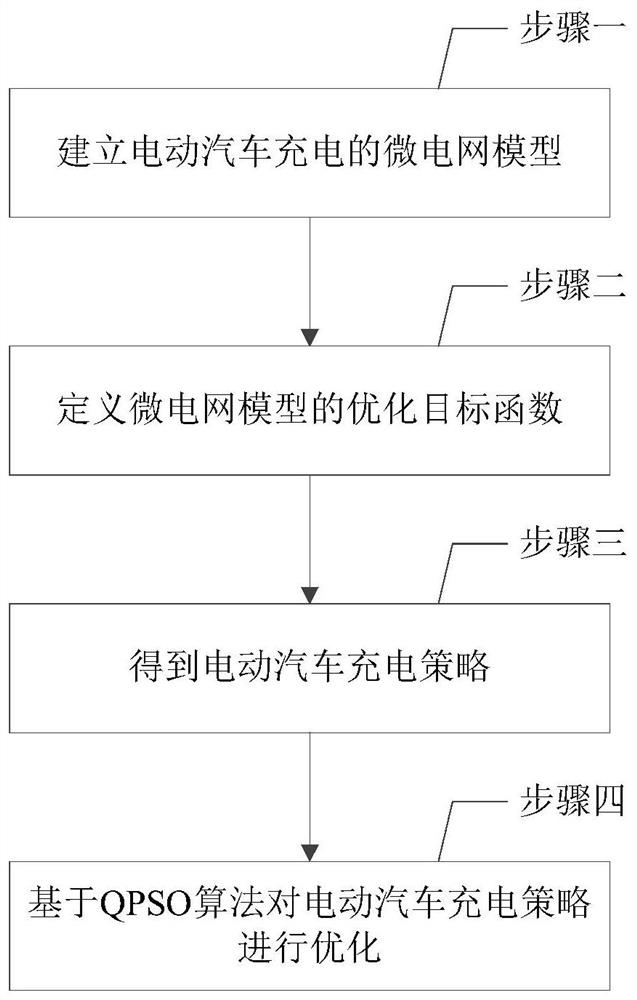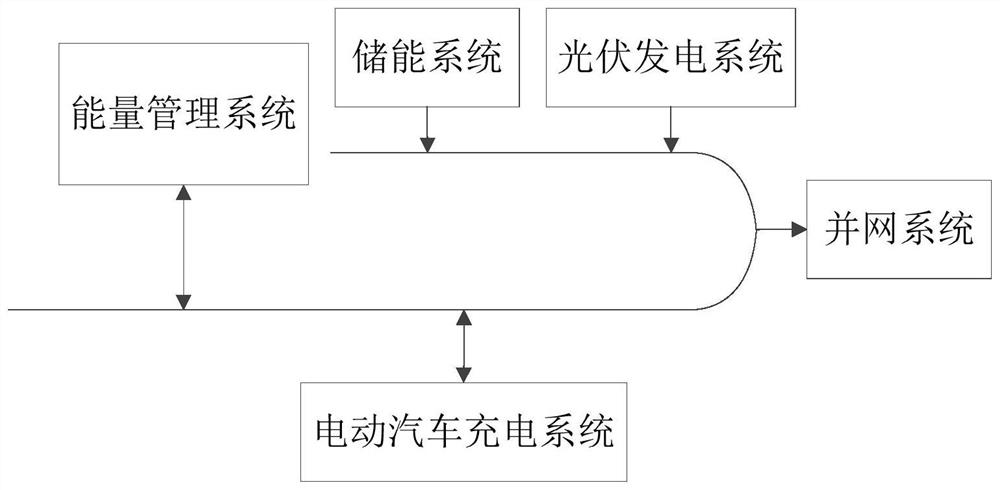Electric vehicle charging strategy optimization method based on QPSO algorithm
A technology of electric vehicles and charging strategies, applied in the direction of electric vehicle charging technology, electric vehicles, charging stations, etc., to achieve the effect of improving the photovoltaic on-site consumption capacity and reducing the impact on the power grid
- Summary
- Abstract
- Description
- Claims
- Application Information
AI Technical Summary
Problems solved by technology
Method used
Image
Examples
specific Embodiment approach 1
[0017] Specific implementation mode one: combine figure 1 To illustrate this embodiment, a QPSO algorithm-based electric vehicle charging strategy optimization method described in this embodiment includes the following steps:
[0018] Step 1. Establish a microgrid model for electric vehicle charging;
[0019] Step 2. Define the optimization objective function of the microgrid model;
[0020] Step 3. According to the optimization objective function defined in step 2, the electric vehicle charging strategy is obtained;
[0021] Step 4, based on the QPSO algorithm, optimize the electric vehicle charging strategy obtained in step 3.
specific Embodiment approach 2
[0022] Specific implementation mode two: combination figure 2 Describe this embodiment. This embodiment is to further limit the charging strategy optimization method for electric vehicles based on the QPSO algorithm described in the first specific embodiment. In this embodiment, the microgrid model in step 1 includes energy storage systems, photovoltaic Power generation system, grid connection system, energy management system and electric vehicle charging system.
[0023] In this embodiment, a microgrid model including a photovoltaic power generation system, an energy storage system, a grid-connected system, an energy management system, and an electric vehicle charging system is established; among them, the electric vehicle charging system is: a company that provides pick-up and drop-off services for employees of the enterprise Commuter electric vehicles; the battery capacity of commuter electric vehicles is 160kW·h, and the company’s working hours are from 8:30 to 16:30. Acco...
specific Embodiment approach 3
[0024] Specific embodiment three: this embodiment is to further limit the QPSO algorithm-based electric vehicle charging strategy optimization method described in specific embodiment two. In this embodiment, the optimization objective function in step two includes: electric vehicle charging Price and the proportion of electricity provided by photovoltaic power generation system in the total electricity consumed by electric vehicle charging system.
[0025] In this embodiment, when the charging power of the electric vehicle is constant, the relationship between the charging time and the charging power is shown in the formula:
[0026]
[0027] In the formula, T EV_cha Charging time for electric vehicles for commuting, SOC EV_0 is the initial state of charge of the electric vehicle (take 15% in this implementation), SOC EV_end The state of charge of the battery at the end of charging the electric vehicle, P ch Charging power for electric vehicles, W EV is the electric veh...
PUM
 Login to View More
Login to View More Abstract
Description
Claims
Application Information
 Login to View More
Login to View More - R&D
- Intellectual Property
- Life Sciences
- Materials
- Tech Scout
- Unparalleled Data Quality
- Higher Quality Content
- 60% Fewer Hallucinations
Browse by: Latest US Patents, China's latest patents, Technical Efficacy Thesaurus, Application Domain, Technology Topic, Popular Technical Reports.
© 2025 PatSnap. All rights reserved.Legal|Privacy policy|Modern Slavery Act Transparency Statement|Sitemap|About US| Contact US: help@patsnap.com



